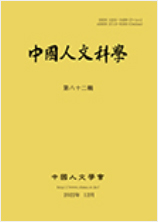19세기 남중국해는 해적들의 전성기였다. 1805년 6개 해적 방파는 협약 체결을 통해 연맹을 구축했고, 남중국해의 항로를 오가는 유럽의 상선과 관군을 상대로 약탈을 일삼았다. 6개 방파 중 가장 강력한 세력은 홍기방이었고, 홍기방의 두목은 연맹의 수장으로 막강한 해상권력을 장악하고 있었다. 본 논문은 여해적 정일수가 해적 세계에서 어떻게 젠더와 성적 규범을 초월해 자율성을 얻었는지, 그리고 남성 중심으로 운영되던 해적 세계에서 어떤 방식으로 권력을 확보하고, 해적 두목으로서의 정체성과 지위를 굳건히 했는지에 주목했다 ‘정일의 아내’라는 의미를 가진 그녀의 이름처럼, 중국의 기록자료에서 그녀는 숨겨지거나, 혹은 남편들의 활약에 가려져 제대로 된 평가를 받지 못했다. 따라서, 본 논문은 동서양 문헌자료의 비교고찰을 통해 연구 주제에 접근하고자 한다.
The South China Sea in the 19th century was the heyday of pirates. In 1805, a group of six pirates signed an agreement to establish the Pirate Federation. In addition, European merchant ships and Chinese merchant ships traveling between routes in the South China Sea were looted and engaged frequently with the Qing Dynasty's naval forces. Among the six groups, the strongest force was Hong Gi-bang (Red Flag), and the Red Flag had strong power as the leader of the Pirate Federation. This paper noted how the pirate Cheng I’s Wife became the leader of Hong Gi-bang (red flag) beyond gender and sexual norms in the pirate world and gained tremendous power in the pirate federation. In Chinese history, Madam Qing was hidden by her husbands and was not properly evaluated. Therefore, in Chapter 2 of the paper, we will look at the Chinese and Western records written about Cheng I’s Wife. In particular, important clues about her can be found in Western records, and data on Cheng I’s Wife and Chinese pirates are abundant in the autobiography of an Englishman who was kidnapped by a Chinese pirate. Chapter 3 analyzed how Cheng I’s Wife ran a pirate organization and the cause of his powerful power in the pirate society from three perspectives: husband's legacy, Article 3 of the Rules, and the religion of pirates's pirates.
Ⅰ. 들어가며
Ⅱ. 상이한 진술 방식과 동서양의 자료들
Ⅲ. 여해적 정일수와 해상권력의 구축
Ⅳ. 나오며
參考文獻
(0)
(0)
